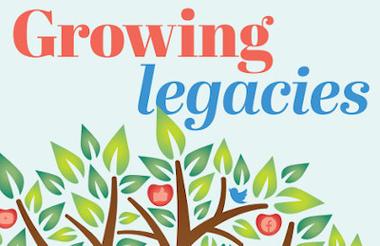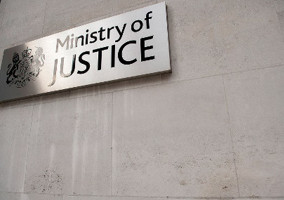Think back just a few years; Alexa and Siri were simply people’s names, zoom was a word mostly found in superhero comics, and it wasn’t uncommon for charities to baulk at the idea of using social media to promote something as sensitive as legacies. Now, with the vast majority of baby boomers online and active on social media, it’s no surprise that legacy fundraisers have embraced digital channels, integrating digital activity into their wider legacy marketing programmes.
For legacy fundraisers, the shift to digital, accelerated by the pandemic, has enabled charities of all sizes to enhance their offline activity and reach new audiences with gifts in wills. They can target those with relevant interests or by demographics, and see almost immediately what resonates. Still, the abundance of options on the table – from social media channels through to pay-per-click, social posts, email and virtual events – means that it’s not always easy to choose the best path.
Charities’ use of digital
A two-year project from Legacy Foresight summarising data and insight from 38 large national charities reveals how widespread digital activity has become. Among the Legacy Fundraising 2.0 participants, digital accounts for one-fifth of legacy fundraising budgets and one hour in every six spent by their team. They all expect to upscale resource on digital over the next five years. And yet, just two in five have a documented digital and social legacy fundraising strategy and few feel ‘‘very confident” about their approach.
Those charities tend to find Facebook paid ads, promotion of free wills and paid search services such as Google Ads most effective in driving legacy leads and prospects. However, channel usage is limited, dominated by charities’ websites, Facebook and email, with half using Twitter. Looking ahead, there is growing consideration for using Instagram, YouTube and LinkedIn, which are gaining appeal with older audiences.
Meg Abdy, development director at Legacy Foresight, says: “It’s clear that digital offers great scope to make legacy stories more topical and less maudlin than they have been in the past. There are some fantastic examples of inspirational campaigns, but I think there’s greater potential. The sector could be pushing further – beyond the abundance of free-will messaging – and be even more creative in this space.”
Building organisational buy-in
Legacy fundraisers often face stiff competition from other fundraising and communications teams. Lack of air space is a common challenge and that’s heightened for legacy teams as they can’t always produce the immediate metrics sought by digital marketers.
Digital impact consultant, Madeleine Sugden, adds: “Until recently, digital was an add-on for many charities’ legacy programmes. During the pandemic, digital became front and centre and it’s here to stay. This means that digital teams are often key gatekeepers for legacies. Some are really open to this, especially where there is a legacy-first culture. In other organisations, there’s tension between digital comms teams and fundraisers because they have different attitudes to messaging, goals and KPIs.
“Fundraisers understand that a few tweets just won’t cut it anymore. They need to take a strategic approach and work more closely with digital teams to build understanding to optimise digital channels for legacy campaigns.”
Last year, legacies made the headlines when Uncle Ewan from the TV series Succession chose to donate his fortune not to his grandson Greg, but to Greenpeace. In the storyline, Greg then decides to sue Greenpeace, carrying the legacy plot across three episodes. The legacy, digital and social media teams joined forces to capitalise on this unexpected opportunity, quickly posting a blog and Twitter posts linking to their legacy giving information (including one directed at lead actor Nicholas Braun, who replied in character) and changing their Twitter handle to @gregpeace. Their quick work sparked a tenfold surge in traffic to the charity’s legacy webpage.
John Hutchin, head of key relationships marketing at Greenpeace UK, explains: “We’ve done lots of work internally at Greenpeace on the importance of legacies, which fund one in six of our campaigns. So, when this opportunity struck, excitement took hold and everyone got behind it; our digital team came up with the idea of writing a blog, and our social media team reached out to the actor. Legacy fundraising rarely has cool moments, but this was it and we knew how important it was to seize that moment and run with it.
“It helps that Greenpeace is a dynamic place. We’re used to being quick and responsive, and we already have a playful tone on social media, so taking a cheeky approach and tweeting the actor to dissuade him from suing us was very much in keeping with that. When it comes to awareness-raising, this was great. For the next couple of weeks we had huge amounts of traffic to our website.”
Fast-paced and accessible
Legacy audiences may be tech-savvy, but when they go online, they want to find what they are looking for quickly and easily. On charities’ websites, legacies need to be clearly signposted and accessible, ideally with information about how people can leave a gift and what a difference it makes.
Strong legacy content will often cover the practicalities of writing a will, while also conveying emotively the impact of legacy gifts, appealing to both hearts and minds. This was the case with Brooke’s “How to” campaign, which prompted many new pledges and enquiries.
Digital trends move fast. At Remember A Charity, which is a consortium of 200 charities working to promote gifts in wills, digital has played an increasingly prominent part in our year-round consumer outreach programmes; for awareness-raising, equipping members, partners and solicitors with digital assets to share the legacy message, and inspiring the public with stories that showcase the impact of legacies to charities. But it’s important to be aware that what works one year may not be the best way forward the next.
Take our Wombles ad campaign, for example, which ran on Facebook in several bursts over the past two years, encouraging the public to remember a charity in their will. In 2020, we tested a wildcard short copy ad, which simply read “What the Womble!”. It was a huge hit. The next year, it performed poorly compared with our longer copy versions. So, we pulled that ad and shifted our focus to those that were outperforming, helping to drive record numbers of new visitors (144,000) to our website in 2021.
This ability to test, learn and adapt is key. This is demonstrated in the RSPB’s adaptive acquisition campaign, which saw monthly legacy enquiries rise by 460% in 2020 (see sidebar opposite).
With such a fast pace of change, it’s hardly surprising that many fundraisers don’t feel fully confident in digital, particularly those who are new to it. But successful campaigns don’t have to be complex or involve high-budget content. Raw video footage, authentic storytelling, infographics and welltimed emails can rival the most sophisticated campaigns, conveying the need for gifts and their impact.
With digital, we can interact, be playful, responsive, informative and inspirational, drip-feeding the legacy message and widening the net for future stewardship. We can test new ideas and content with relatively little budget. And, critically for legacies, we can communicate sensitively and emotively, inspiring the public with the impact of gifts in wills.
Lucinda Frostick is director of Remember A Charity
Case study: Brooke
With legacies bringing in more than 50% of its voluntary income, Brooke set out to diversify its legacy marketing strategy in 2019, reducing its former reliance on direct mail and events. Then the pandemic hit.
Implementing a digital-first approach, the charity designed a “How to” campaign that tapped into the public’s rising interest in wills and legacy giving by sharing tips on “how to write a will when social distancing”.
Building on that campaign’s success, the next phase in the series launched in September 2021, this time aiming to dispel one of the key myths about will writing – that it’s difficult and time consuming to do – while inspiring people to leave a legacy to Brooke.
Featuring long-time Brooke supporter and legacy pledger Angela Rippon as its figurehead, the campaign launched with a video showcasing six easy steps to writing a will. It demonstrated how easy it is to include Brooke in a will and the life-changing impact such a gift could have to the lives of working horses, donkeys and mules around the world.
From September to December, campaign content was shared with Brooke supporters, legacy enquirers, internal audiences and promoted to the wider public using social channels (targeting those with relevant interests) and pay-per-click (PPC). It was also communicated by email, in print media and on Brooke’s website, where it still sits prominently on the homepage.
In November 2021, the campaign landing page (thebrooke.org/legacies) attracted the most traffic of all Brooke webpages, while the email became one of the charity’s most opened that year, with a 33% open rate. Email proved one of the most successful channels; 50 people responded to the legacy team inbox and yielded 11 new pledges, 13 reconfirmed pledgers, one conversion of an enquirer to pledger and 14 new enquiries.
Brooke’s social organic Facebook posts achieved 93,000 impressions (with an engagement rate of over 7%), paid for posts reached 289,000 impressions and PPC a further 138,000.
Sarah Squire, legacy marketing manager at Brooke, explains: “Facebook ads were most effective for low-cost awareness-raising, driving a high volume of people to our webpages, where they could request a copy of our legacy information pack.
“Ultimately, it’s about delivering the right content, through the right channels to the right audience. Digital is key in enabling us to do that in a way that engages our target audience and is cost-effective; with the added bonus of ensuring that we understand what approach has the most impact.”
Continuing with the approach of delivering relevant and timely content across multiple channels, Brooke is now planning the third “How to” campaign, set to launch in Spring 2023.
Case study: RSPB
Legacies are a crucial income stream for the RSPB and yet, without an active legacy fundraising programme in recent years, the number of pledgers was in decline.
Aiming to reverse that trend and to inspire more nature lovers to consider the charity in their will, the RSPB appointed Catsnake: The Story Agency to help develop a digital storytelling campaign that would convey its mission to protect habitats, save species and help end the nature and climate emergency.
Launching in 2020 on the RSPB’s social channels, the video and story-based campaign was a first for the RSPB legacy marketing team. Developed as an adaptive acquisition campaign, multiple variants were trialled, from the emotional drivers woven into the copy to the specifics of the storyline, its length, and more.
In another first, in 2021 the charity launched its DRTV legacy advert, which ran alongside waves of the campaign on social media, amplifying its impact.
With ongoing monitoring and testing, the RSPB was able to continually adjust the campaign around the most successful and timely elements, delivering bursts of activity at key moments and enabling it to keep legacies front of mind with an evolving storyline.
Vicki O’Hare, head of legacy marketing at RSPB, says: “Although we spent a great deal of time planning our narrative and how it could develop, this campaign felt miles apart from what we’d done before. It was nerve-wracking doing something so new and different. But we had a great response and it’s transformed how we feel we can inspire supporters and articulate our legacy message going forwards.”
Setting an ambitious goal of increasing the average number of legacy enquiries by 300% per month, the RSPB exceeded this target and, in 2020, topped a 460% monthly increase.
O’Hare adds: “We found that our older audiences are not only increasingly tech-savvy but also that digital channels work for them. Legacy giving and end-of-life planning can be very personal, and they like having the opportunity to download information and digest it in their own time. Still, we aren’t just thinking about older people here. More people are thinking about wills at a younger age and we want to be visible in that space for them too.”
A key success metric for RSPB was the level of opt-ins to future communications from engaged supporters. O’Hare concludes: “What’s worked so well for us is that, thanks to the quality of the new enquirers we’ve had from our digital campaigns, we’ve been able to build on that engagement and steward those supporters. More people have signed up for communications from us and, in just a year, our newsletter open rate has jumped from 23% to 42%, and our click-through rate more than doubled.”
Related articles












